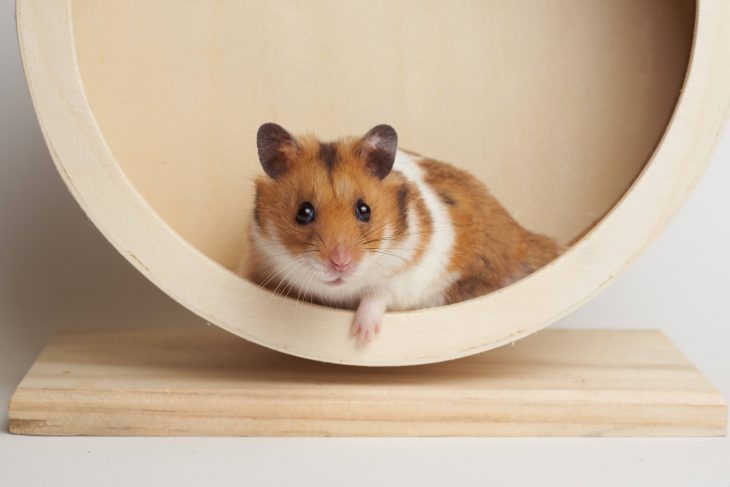
If you’re looking for a furry companion, have you considered choosing one from the different types of hamsters? Hamsters are one of the most popular household pets when pet cats and dogs are a little too much for some people.
Now before going over each one, it’s a good idea to define this adorable creature first.
What is a hamster?
A hamster is a mammal under the order Rodentia and the family Cricetidae. In other words, a hamster is a type of rodent. Hamsters have a small and stout body with a short tail and fur-covered feet. They are known to have large cheek pouches that they use to store and transport food.
In the wild, they live underground in burrows and travel out at night to look for food. So, are hamsters nocturnal? The answer is yes. Hamsters sleep in the morning and are active at night.
Why are hamsters popular pets?
Aside from cats or dogs, people often go for hamsters as their choice of pet. This makes sense as hamsters are relatively easy to take care of. They are small and take up little space – ideal for those who live in apartments. They are also sociable, making them easy to befriend.
A hamster’s average lifespan differs per type, but most live for only two to four years. This makes them ideal pets for those who aren’t sure about taking care of a pet for a long time.

How do you take care of pet hamsters?
Of course, there are still plenty of other factors to consider before getting a pet hamster. Whatever hamster type you choose, you will need to take care of them properly. Some basic tips for taking care of hamsters are:
Feed them the correct food.
All types of hamsters are omnivorous. They mostly eat seeds, crops, and other small insects. To take care of your pet hamster, you’ll have to feed them natural food aside from commercial hamster food. You can give them vegetables, fruits, and some nuts as well.
Citrus fruits, however, can upset their stomach, so avoid feeding them lemons, oranges, and lime.
Give them plenty of time and attention.
Hamsters are sociable creatures. They have a lot of energy, so they will want to play with you a lot. Some types of hamsters can get lonely, and this can stress them out and affect their physical health. When you’re adopting a hamster, be sure you invest your time and attention in them!
Prepare the right size for their cage.
Some types of hamsters are bigger than others. This means you’ll have to get a bigger cage for them, too. For smaller hamsters, you should still get a cage that has enough space. A cage that limits their movement isn’t good, especially since hamsters like to dig, burrow, and climb.

Do not house hamsters in the same cage.
Most types of hamsters are territorial. They don’t like sharing their shelter, food, and toys with other hamsters. With that, some can get aggressive and even attack other hamsters. If you have plans to adopt more than one pet hamster, then it is best to have separate cages.
Provide them with an exercise wheel and ball.
Providing your pet hamster with toys will keep them happy. Exercise wheels, for instance, will help them release energy and stay physically fit. Balls, climbing ladders, and tubes can also be great additions to your hamster cage. Be sure to get equipment that is big enough for your pet hamster’s size.
With this basic information out of the way, it’s now time to go over the different types of hamsters. If you think a hamster is the right pet for you, then keep on reading for everything you need to know about the different types of hamsters!
What are the different types of hamsters?
There are 19 different types of hamsters in total. They each come from different places and differ in size, color, and temperament. However, of the 19 hamster types, only five of them are commonly kept as household pets.
Common Types of Hamsters for Pets
Syrian Hamster
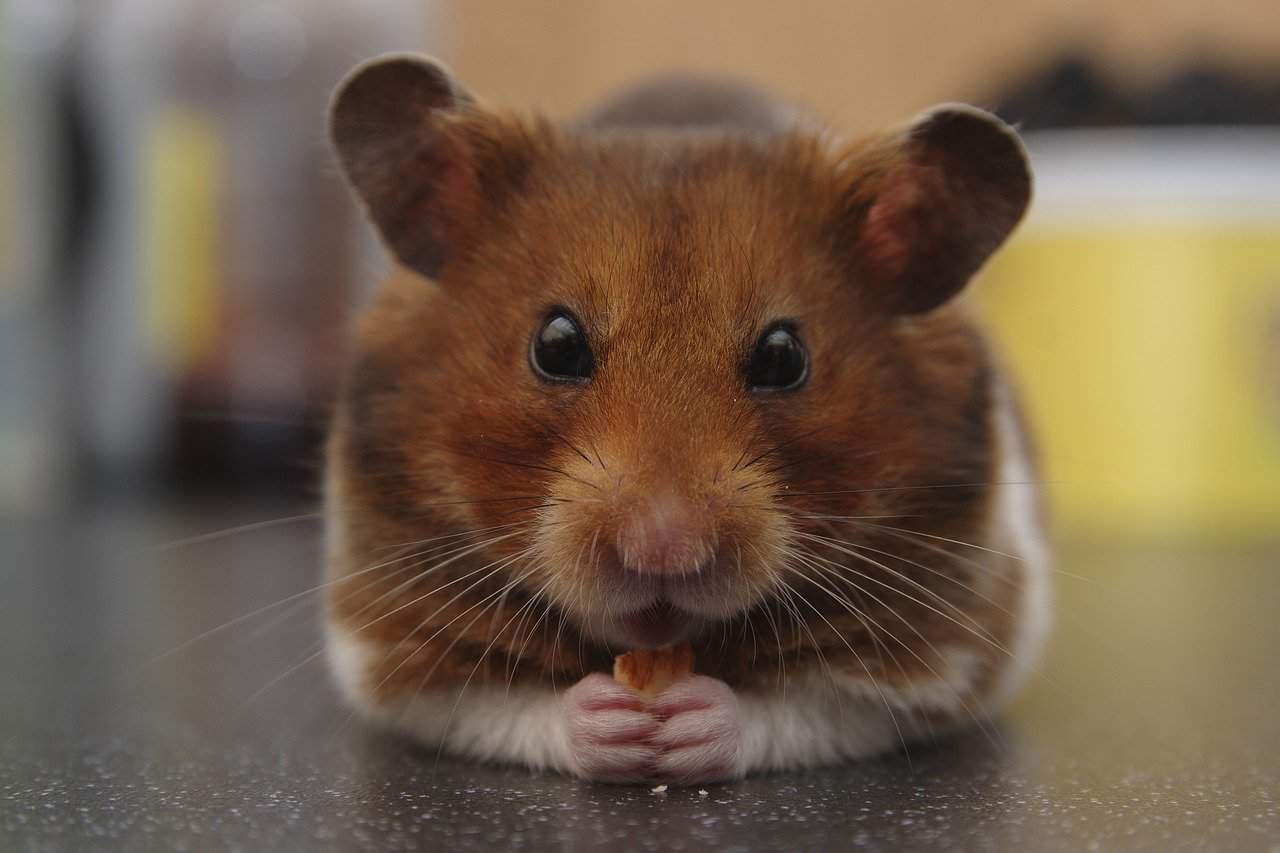
Out of all the types of hamsters, the Syrian hamster is the most popular. The Syrian hamster is what most people choose. They have fluffy golden fur, which is why they are referred to as “golden hamsters” and “teddy bear hamsters.”
A Syrian hamster’s average lifespan is around two to four years. Its size is around 6 to 7 inches, which makes it larger than most types of hamsters.
While they are the most popular hamsters, Syrian hamsters aren’t as friendly with other hamsters as they are with humans. It is best to keep this as your only pet or make sure it has its cage.
Campbell’s Dwarf Hamster
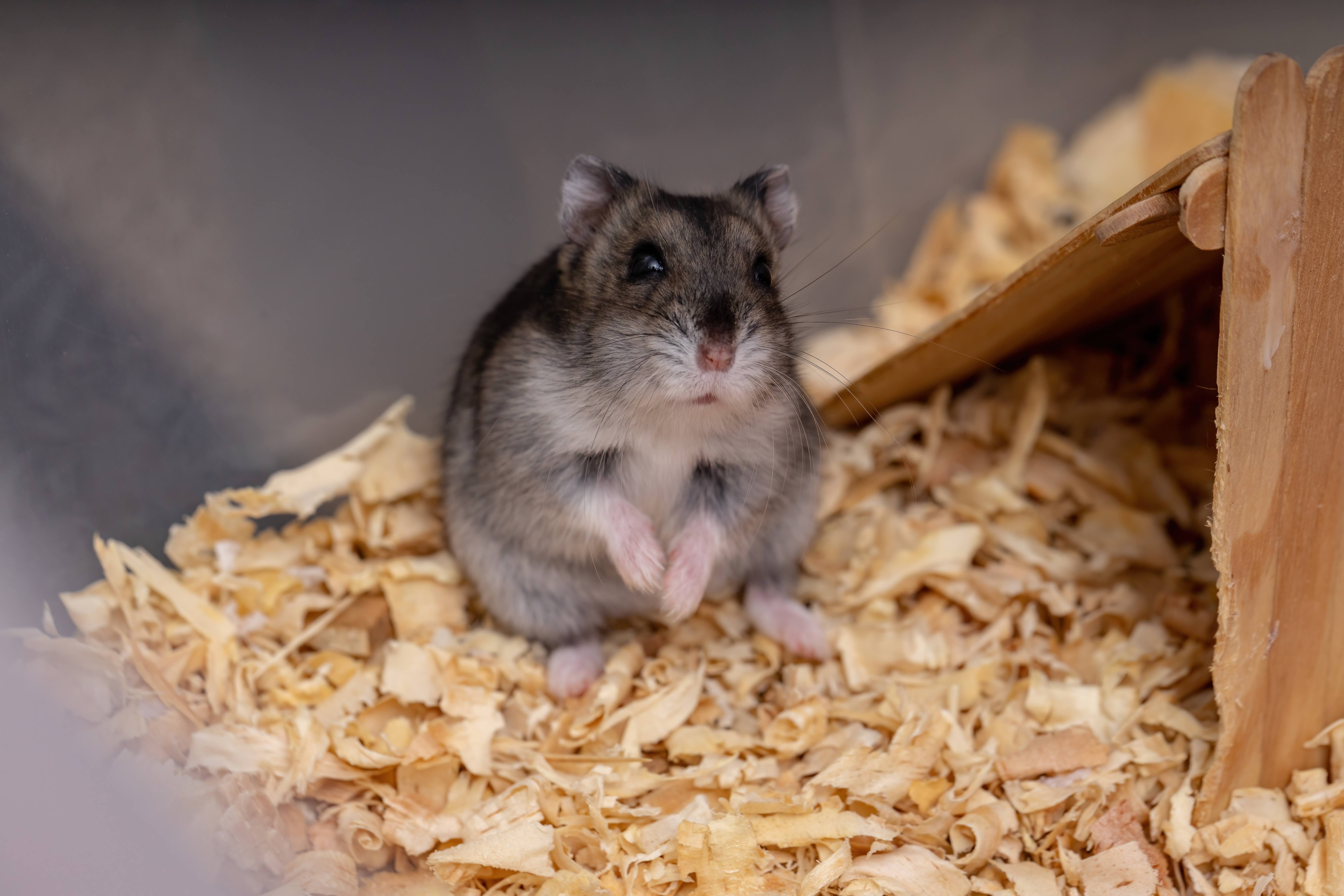
Campbell’s Dwarf Hamster is native to Northern Russia, China, and Central Asia. As the name suggests, it is one of the smaller types of hamsters. They are usually around 3.55 to 4.5 inches. The other half of its name comes from Biologist Charles William Campbell, who was the first to collect the hamster type in 1902.
Campbell’s Dwarf Hamsters are prone to developing diabetes. Because of this, their lifespan is shorter than other hamsters as they live around one to two years only. This makes them a less popular pet choice.
This hamster is also less friendly than other types. Campbell’s Dwarf Hamster gets nervous easily, and often bites people if pushed further. It’ll take some time for them to warm up to you, so you might want to consider a different breed if you want to quickly make a friend.
Roborovski Dwarf Hamster
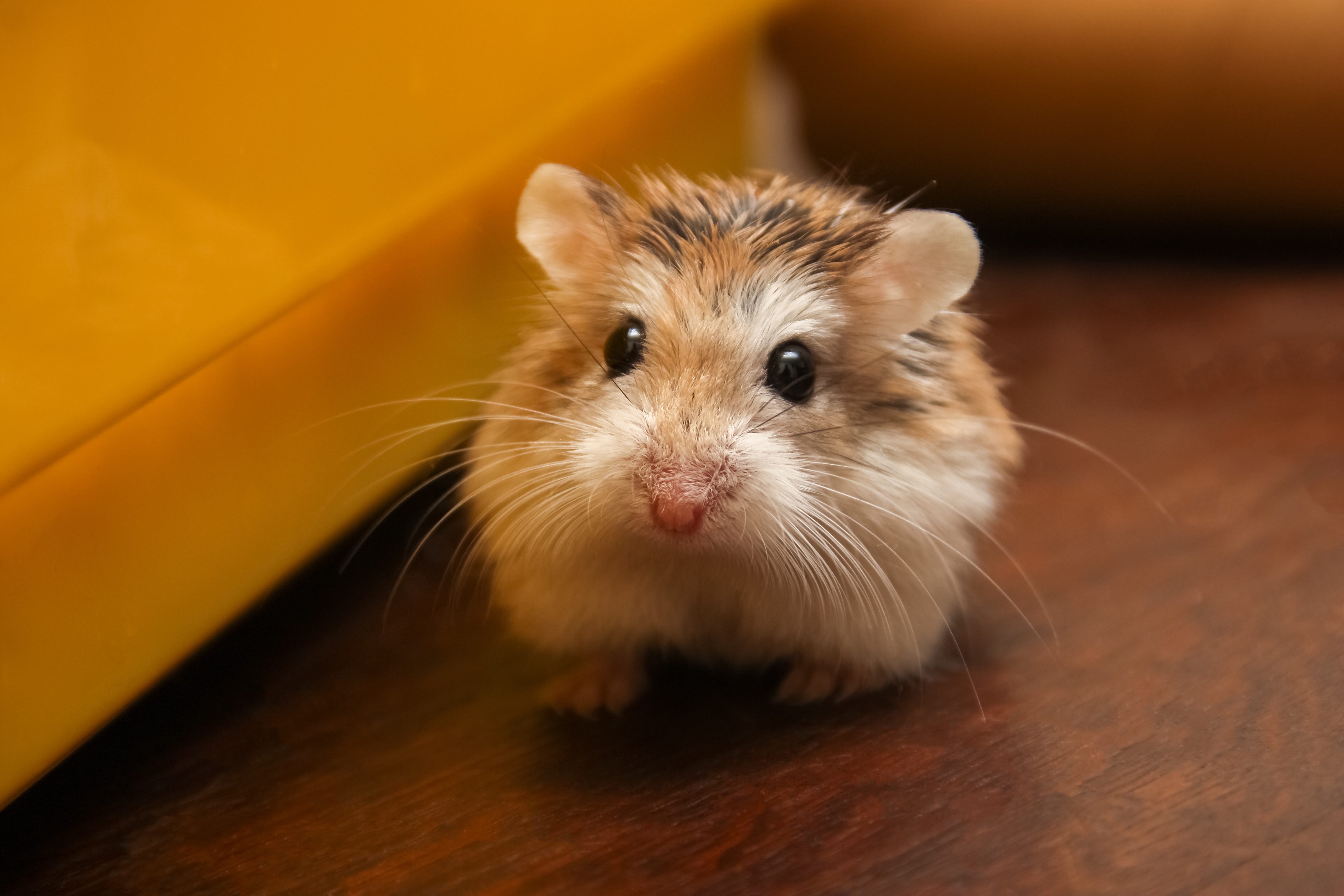
The Roborovski Dwarf Hamster or Russian Dwarf Hamster is one of the smallest types of hamsters. This hamster is only around 2 inches, small enough to fit snugly in the palm of a child!
The name of this hamster comes from Lieutenant Vsevolod Roborovski, a Russian army officer and collector of many specimens. He popularized this hamster type as well as other species, such as the Tibetan rosefinch.
Compared to other types of hamsters, the Roborovski Dwarf hamster is quite shy. They are nervous at first and will take some time to open up to their owners. However, once they become comfortable, they become very energetic and playful.
Winter White Dwarf Hamster
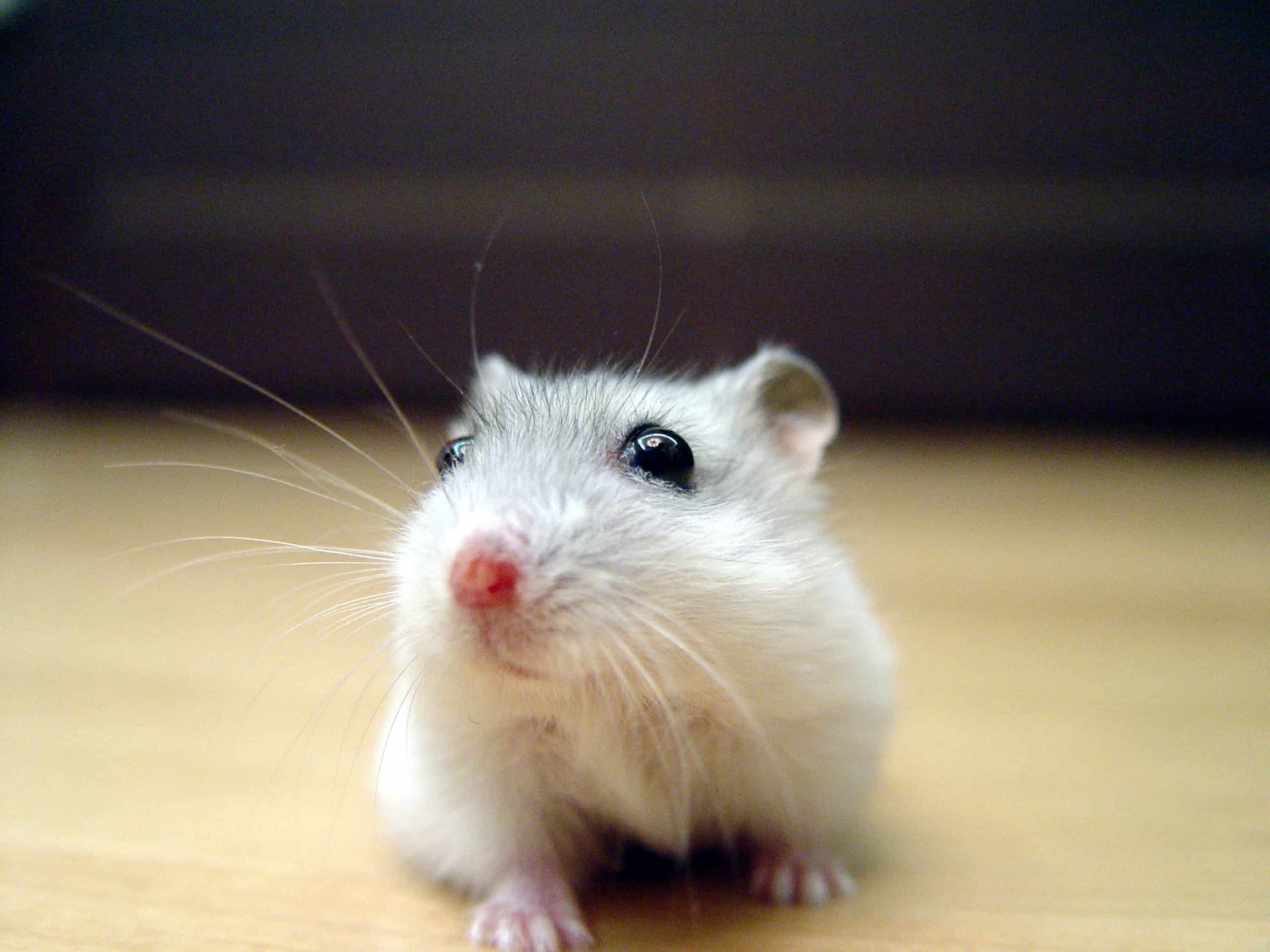
The Winter White Dwarf Hamster is a subtype of the Russian Dwarf Hamster. As its name suggests, the Winter White Dwarf Hamster is a small hamster with white fur. This hamster type is around 3 to 4 inches with an average lifespan of one to two years.
Like most types of hamsters, the Winter White Dwarf Hamster is friendly and affectionate. However, they are initially timid, especially when they find themselves in a new environment. They are not aggressive, so they can be easy to befriend.
Chinese Hamster
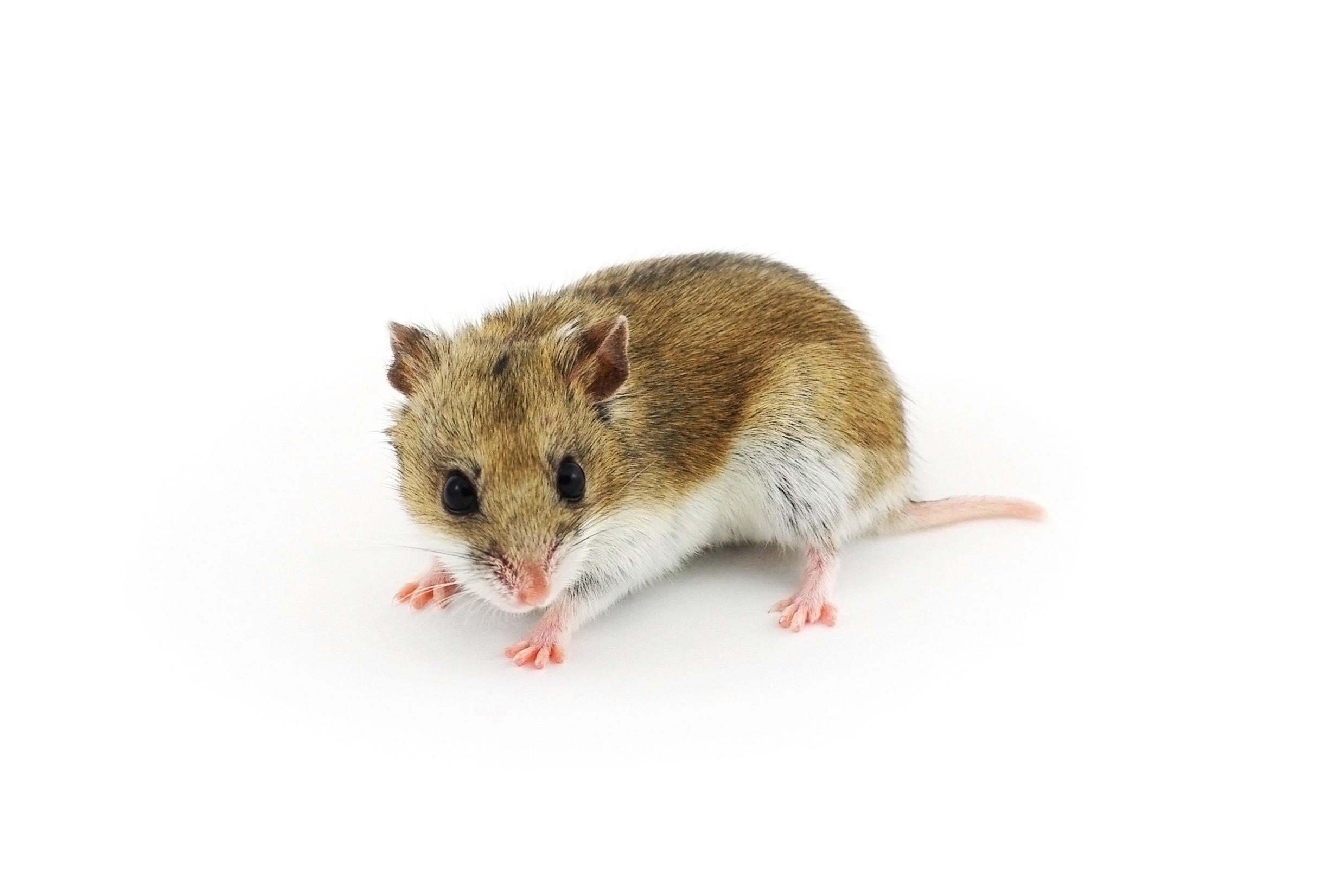
The Chinese Hamster stands out the most from the other types of hamsters listed so far. Unlike the others, the Chinese Hamster has a long tail. This is likely because it belongs to a different genus. The Chinese Hamster belongs to the Cricetulus genus, and it is native to Mongolia and Northern China.
Among the dwarf hamsters, it is the least popular choice as a pet. However, the Chinese Hamster is actually very friendly and non-aggressive. It does require more attention than other types, for the Chinese Hamster is very active. It gets bored easily, so an owner will constantly have to stimulate it with lots of exercise and activity.
For pet owners who have a lot of time and attention to give, the Chinese Hamster might be for you!
Types of Hamsters in the Wild
As for the remaining 14 types of hamsters, you’ll rarely see them in pet stores. This is because they mostly live in the wild. No rule prohibits pet owners from taming these wild hamsters. However, keep in mind that most wild types of hamsters prefer to stay wild.
Chinese Striped Hamster
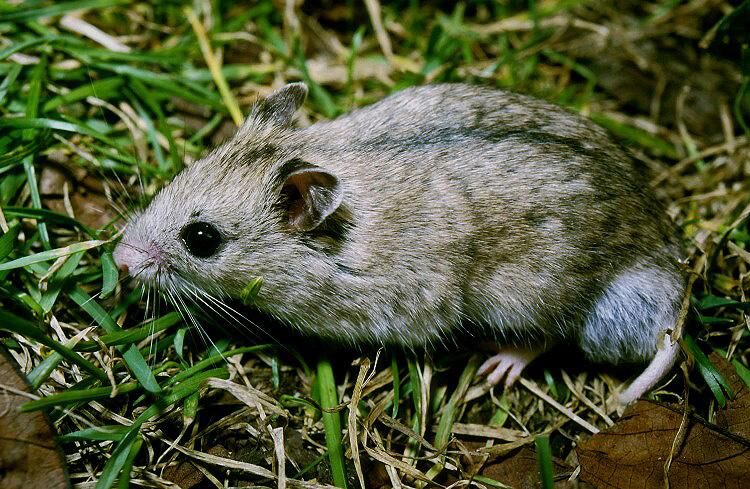
While their names might confuse some, the Chinese Striped Hamster differs from the Chinese Hamster. The Chinese Striped Hamster is around 2.8 to 4.6 inches long. Its name comes from the black stripe running down its back. Because of this feature, another name for this hamster species is Striped Dwarf Hamster. This hamster also has a noticeable tail that is around 1 inch long.
While they are native to Central and Eastern Asia, they can now be found throughout Northern Asia, such as in Mongolia and North Korea. In the wild, Chinese Striped Hamsters live in burrows underneath grasslands. They are most active during the early hours of the night. During winter, these hamsters hibernate in their burrows.
Ciscaucasian Hamster
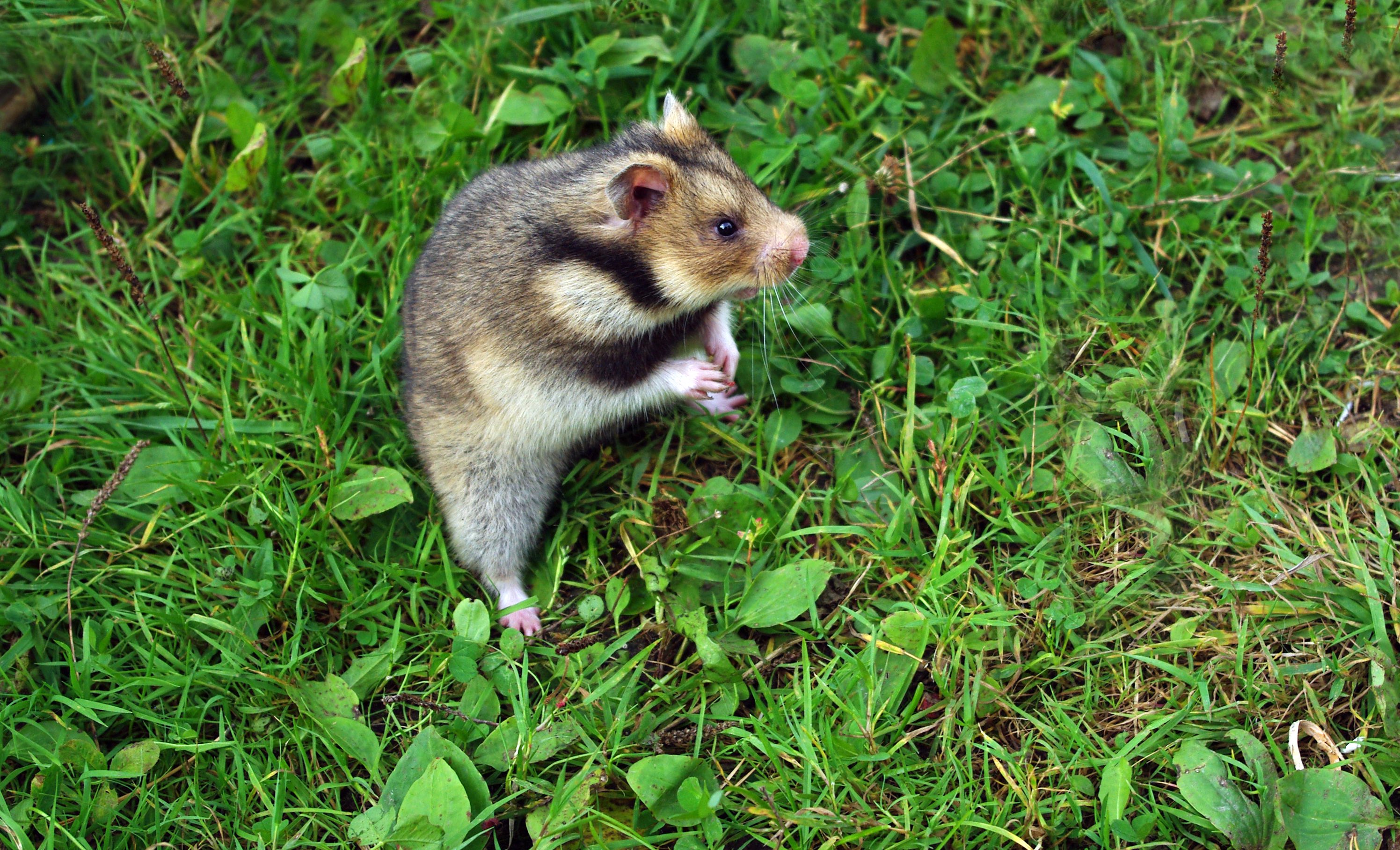
The Ciscaucasian Hamster, or Georgian Hamster, is one of the larger types of hamsters. Its average size is around 11 inches! Despite its body length, its tail is less than an inch long.
The fur of a Ciscaucasian Hamster is yellowish-brown with white and black accents. Aside from the fur pattern, its large cheeks and round ears complete its cute appearance. To farmers, however, these hamsters aren’t adorable at all and instead consider them as pests. This is because Ciscaucasian Hamsters often feed on seeds and crops. In the wild, it likes to burrow near pastures and farmlands.
Not all farmers have to be wary of these hamsters, however, since they only live in Georgia and Russia.
European Hamster
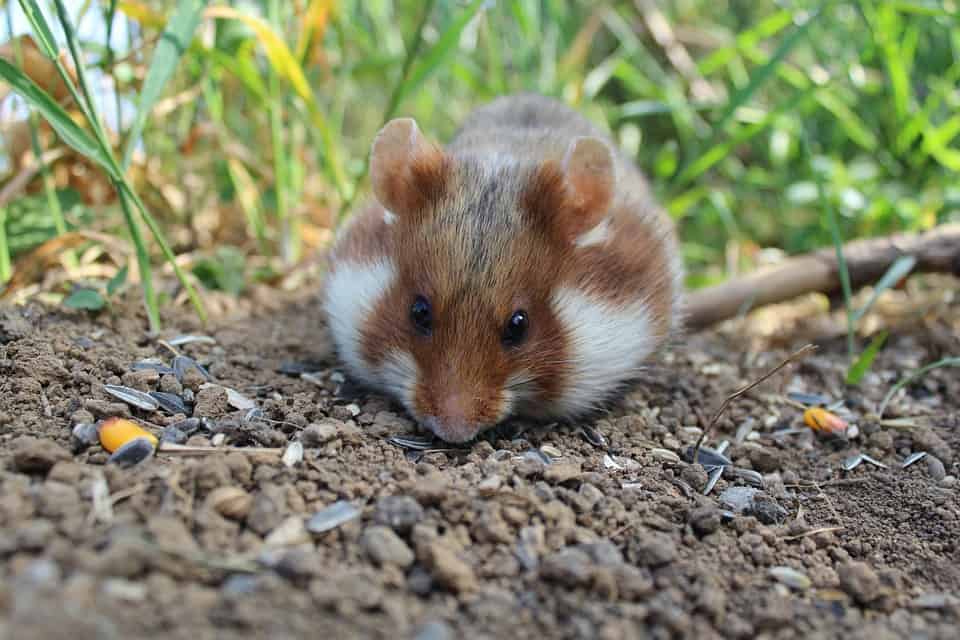
Next on the types of hamsters list is the European Hamster. The European hamster is under the genus Cricetus. It is also the only species of this genus. The European hamster is native to parts of Eurasia, such as Belgium and Russia.
The European hamster is much larger than other types of hamsters. It can grow up to 14 inches long, and its tail is usually around 1.6 to 2.4 inches.
One distinct feature of the European hamster is its dark chest and belly. It has brown and white fur, which makes the black accent stick out. Unfortunately, the European hamster is considered critically endangered in some European countries. People hunt this hamster species because of its unique fur.
Eversmann’s Hamster

The Eversmann’s Hamster is also bigger than common types of hamsters. Its average body length is around 5 to 6 inches long. Its fur color varies. Some have reddish fur, while others have black and white fur.
This hamster species is endemic to parts of Kazakhstan. In fact, another name of this hamster is the Kazakh Hamster. It is also found along the rivers of Russia, which is why it was named after Edouard Eversmann, a famous Russian zoologist and explorer.
In the wild, this hamster likes to dig burrows in farmlands. They are also very territorial, which means they will fight off other hamsters that try to live close by.
Gansu Hamster
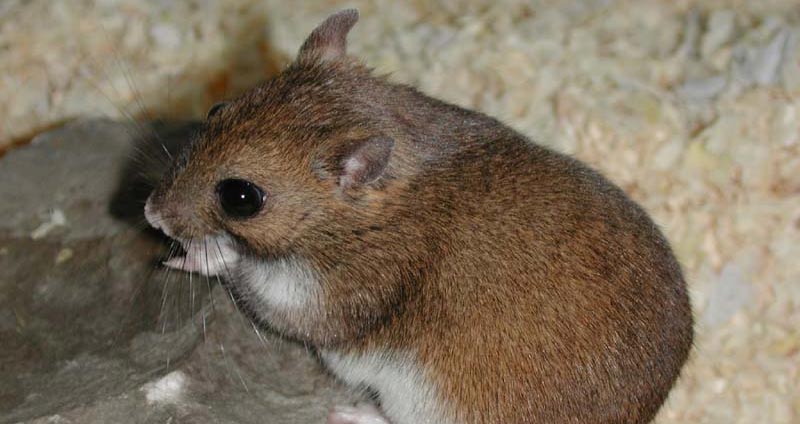
The Gansu Hamster is the only species under the Cansumys genus. Its binomial name is Cansumys canus. These small hamsters have brownish fur with a yellow belly. They also have beady black eyes and small ears.
Gansu hamsters are less popular than other types of hamsters, and there is little information about these rodents as well.
Greater Long-Tailed Hamster
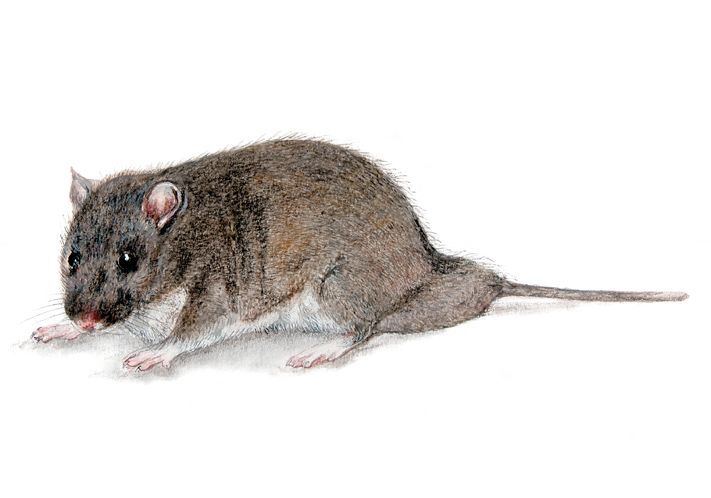
Some types of hamsters look very similar to mice that people often mistake one for the other. One example is the Greater Long-Tailed Hamster. As the name suggests, the Greater Long-Tailed Hamster is a large hamster with a long tail, like a mouse.
It lives in Northern China, where many consider it to be a major pest. In fact, some Chinese ancient texts, such as the I Ching, repeatedly mention the hamster.
Aside from eating crops, the Greater Long-Tailed Hamster also likes to scream. It often stands on its rear legs and screams as a way of communicating with other hamsters. This can often disrupt the quiet of residential areas.
Grey Dwarf Hamster
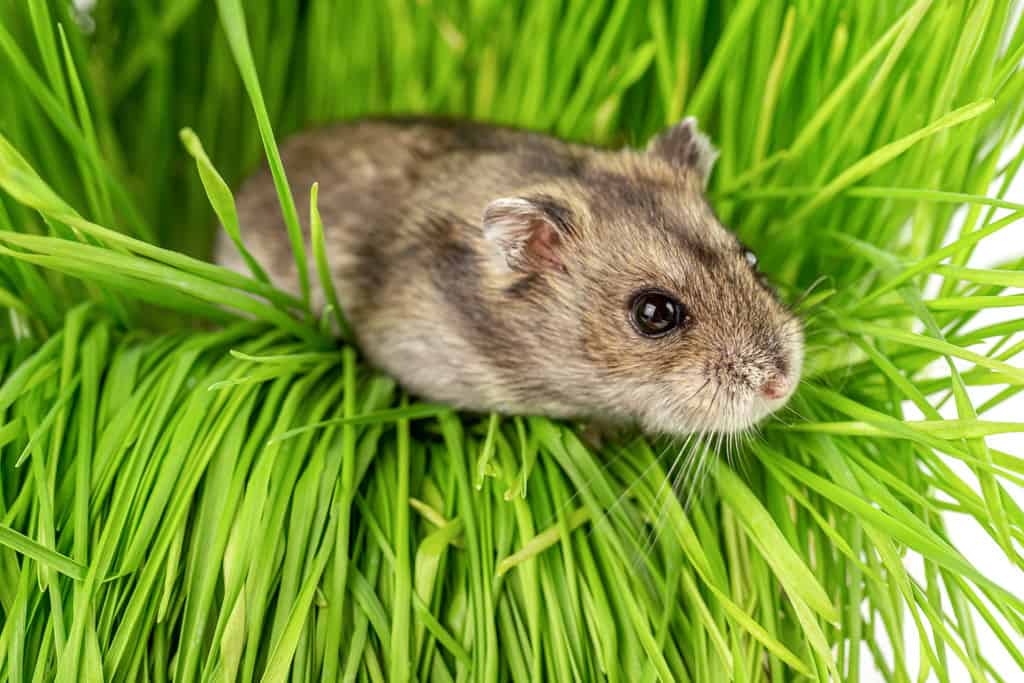
The Grey Dwarf Hamster is one of the types of dwarf hamsters. This hamster species lives in various parts of Eastern Europe and Asia. There have also been records of Grey Dwarf Hamsters living in Greece, but the last sighting was in 1970.
The Grey Dwarf Hamster is around 4 inches long, and it has brownish-grey fur with white accents. It also has big ears, completing its loveable look.
In the wild, the grey dark hamster likes to burrow in dry grasslands and semi-deserts. However, some also live underneath gardens and buildings. Its burrows can reach up to 5 feet beneath the ground, where it also forages for roots and seeds.
Kam Dwarf Hamster

Several types of hamsters are from China, and one example is the Kam Dwarf Hamster. The Kam Dwarf Hamster lives in western China’s mountains and grasslands, where they favor marshes and steppes.
The Kam Dwarf hamster’s body size is around 3.5 to 4.4 inches, with a tail that is 2 inches long. This cute hamster has greyish brown fur with black accents. Compared to other types of hamsters, its tail is quite thick, and it is covered with guard hairs.
The Kam Dwarf Hamster is active during the day and night. It also leaves its burrow during the day to forage for food.
Long-tailed Dwarf Hamster
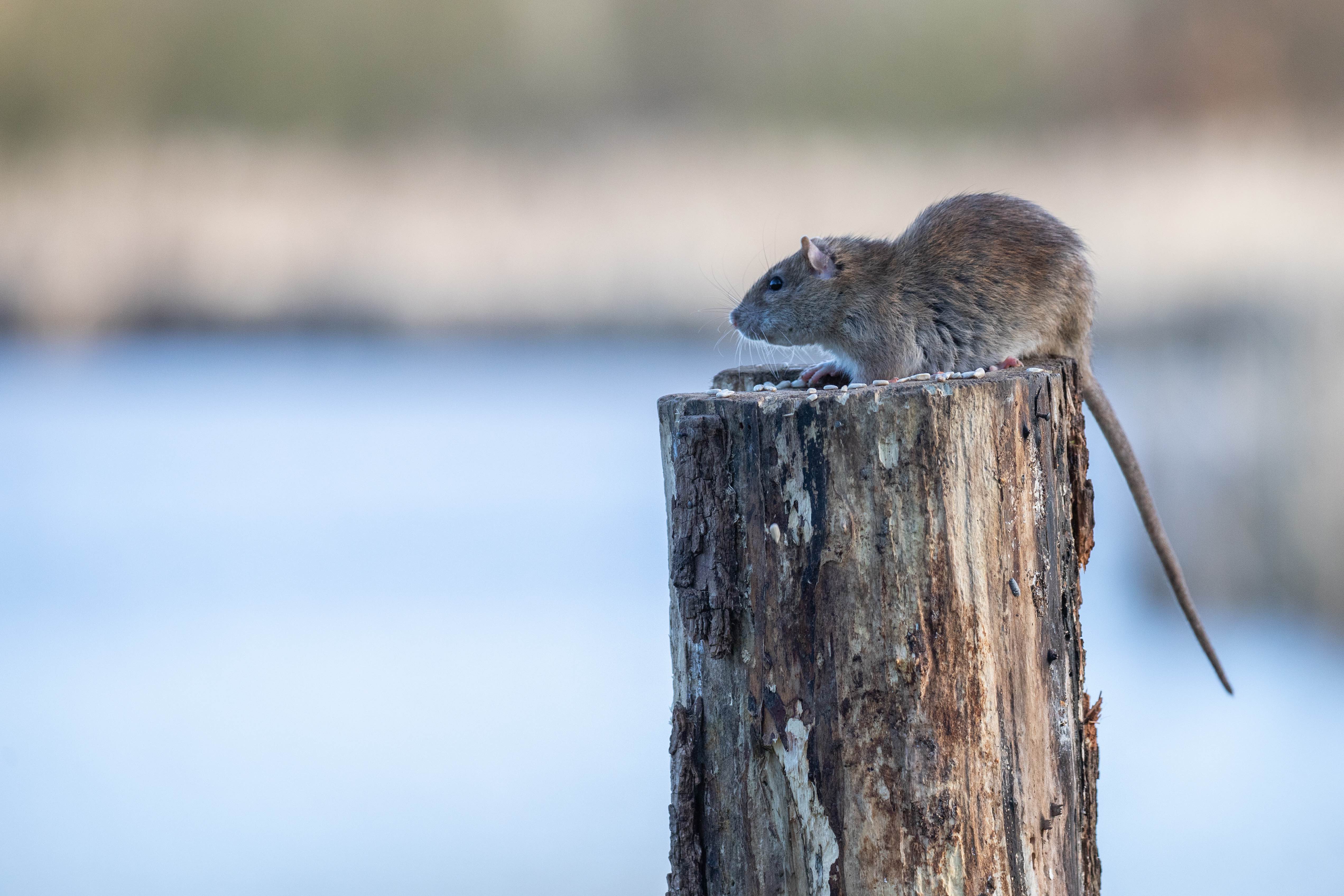
The Long-tailed dwarf hamster is one of the smaller types of hamsters. Its average body size is around 3 to 5 inches long. As the name suggests, however, it has a relatively long tail. Its tail is at least a third of its body length.
This hamster type lives in various areas of northern and central China. It can also be found in Kazakhstan, Mongolia, and Russia. It prefers dry forests, foothills, and semideserts, where it burrows under boulders.
Despite the risks of drought in its habitat, the long-tailed dwarf hamster has a large population. It currently holds a conservation status of “least concern” by the International Union for Conservation of Nature (IUCN).
Mongolian Hamster

There are only two types of hamsters under the genus Allocricetulus. One of them is the Eversmann’s hamster, while the other is the Mongolian hamster. The Mongolian hamster lives in parts of China and Mongolia.
This hamster has sandy fur with grey accents. Its belly is a lighter shade, while its back has light spots. The Mongolian hamster has large, black eyes and long whiskers.
Mongolian hamsters prefer to live in the wild, so not much information is known about this species’ behavior. Currently, they are classified as Least Concern by the IUCN.
Romanian Hamster
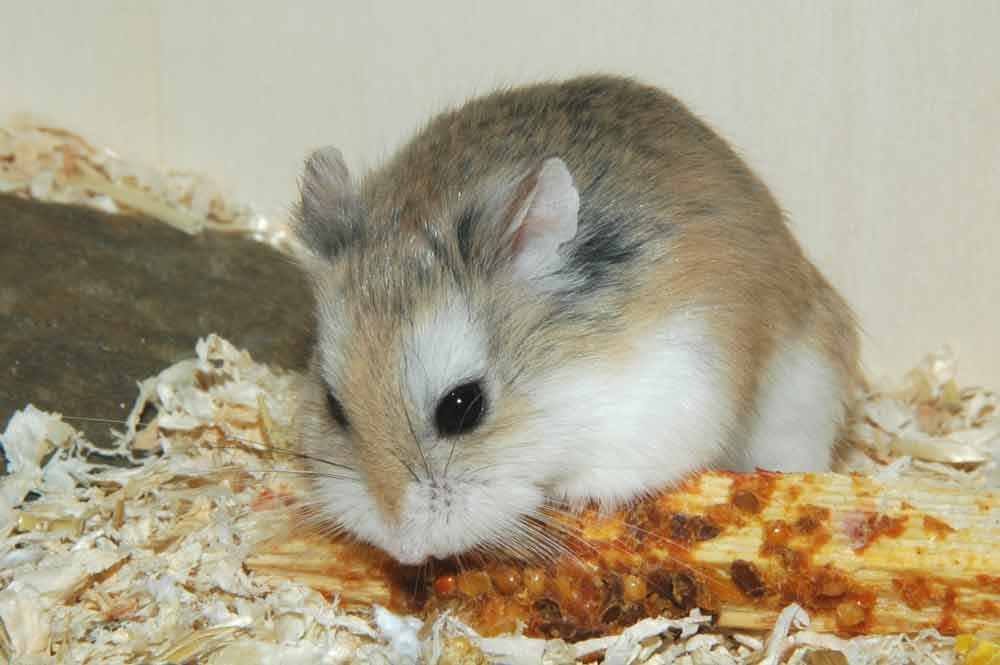
The Romanian hamster is one of the larger types of hamsters. It can grow up to 7 inches long with a weight of up to 115 grams. This hamster has brown fur with a distinct dark stripe that runs from the top of its head to its neck. It also has dark stripes on its large cheeks that run down to its shoulders.
Romanian hamsters live in Bulgaria and eastern Romania. They live in complex burrows alone unless it is mating season.
Another name for this hamster is the Dobrudja hamster.
Sokolov’s Dwarf Hamster
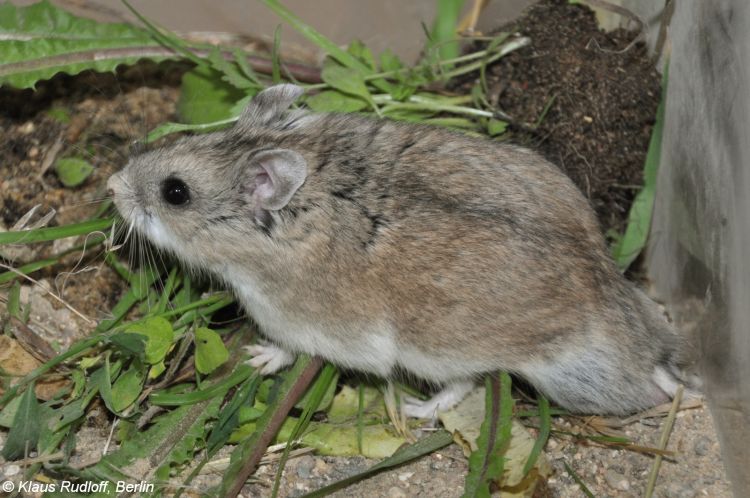
The Sokolov’s Dwarf Hamster was originally classified as the Chinese Striped hamster, until 1988. The mentioned types of hamsters look similar because of the stripe on their backs. The difference with Sokolov’s Dwarf hamster is that it has yellowish-grey fur with a dark stripe running down its back. Its body is around 3.7 inches long with an average tail size of 1 inch.
Its name comes from the Russian zoologist Vladimir E. Sokolov. Despite being named after a Russian zoologist, however, this hamster type lives in China and Mongolia. In the wild, it burrows in deserts under shrubs.
Tibetan Dwarf Hamster
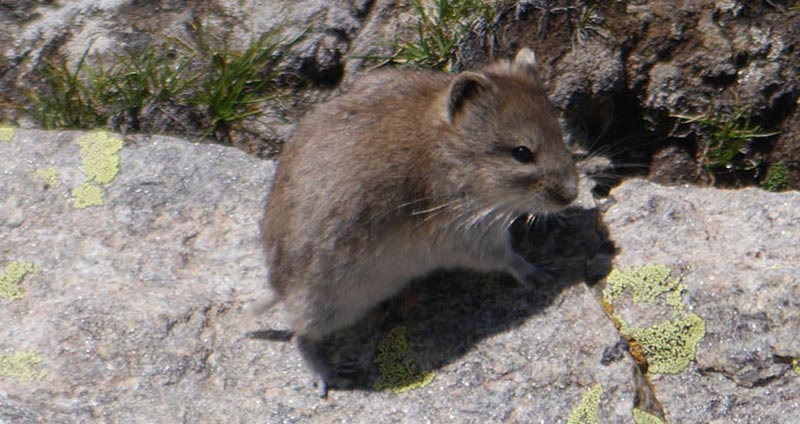
The Tibetan Dwarf Hamster is yet another type of dwarf hamster. This hamster is around 4 inches long, and its tail is usually around an inch long. The fur of a Tibetan Dwarf Hamster is sandy with some darker shades on its body. It has distinct accents on its ears, which are a darker shade of brown.
As the name suggests, the Tibetan Dwarf Hamster lives in Tibet. However, it also resides in the mountains of China, India, and Nepal. The Tibetan Dwarf Hamster favors forests, grasslands, and meadows. It also burrows in deserts.
Turkish Hamster
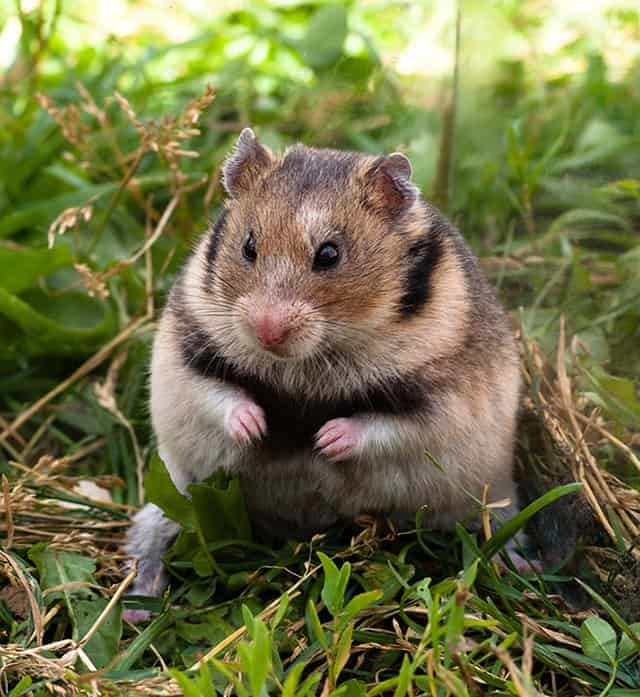
Last on this list of types of hamsters is the Turkish Hamster. This hamster is closely related to the Syrian hamster, which is why it also has brown fur. This hamster is relatively short, and it has an average lifespan of two years.
The Turkish Hamster is native to Turkey, but they live in other areas of Europe and Asia. They easily adapt and can live in different environments. Unfortunately, the population of Turkish Hamsters is declining. Because laboratories often use these hamsters for testing, they are now classified as Near Threatened.
Was this page helpful?
Our commitment to delivering trustworthy and engaging content is at the heart of what we do. Each fact on our site is contributed by real users like you, bringing a wealth of diverse insights and information. To ensure the highest standards of accuracy and reliability, our dedicated editors meticulously review each submission. This process guarantees that the facts we share are not only fascinating but also credible. Trust in our commitment to quality and authenticity as you explore and learn with us.


